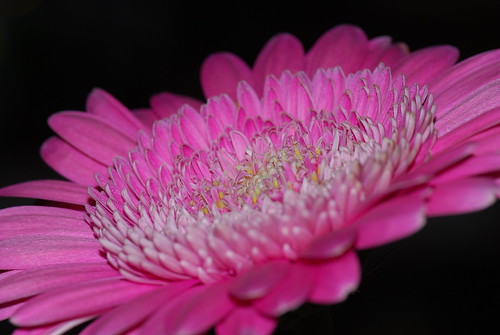
General impressions:

The lens is one of the Nikkor pro-lenses (gold ring around the lens). It features VRII technology (the recent version of vibration reduction), special nano-coating (to improve optical quality) and AF-S. The first impression when you first mount the lens on a camera is that this lens is HUGE, and the sun hood is HUGE as well. You need big hands to manipulate it. The lens has a fixed length, something different than the classical competitors. Picture quality is excellent, with some softness in the corners fully open, performance in the corners is increasing at 5.6 and above. Autofocus is a bit strange, even if there is a limiter switch, and AF-S (focus is fast), the lens/camera is hunting very often and has problems to lock in compared to other lenses I have. The VR is really an added value and is working pretty well. There is no normal/active mode switch, VRII is supposed to detect if on a tripod or not. In practice, you have to switch it off when on a tripod (but do not forget to switch it back on afterwards). The implementation of VRII is not the same as in other Nikkor lenses, there is no active/normal switch and the lens does NOT detect if it is mounted on a tripod or a monopod. I did some tests with the lens on a tripod and VR on, and when activating focus and VR, the lens/camera combo is moving in a strange way - not recommend. Overall, I find it a very nice performer. I have been using that on a professional assignment as well as for portrait work and the results were very convincing. Resolution and sharpness are really impressive. I would say that only my 85 1.8 comes close wrt resolution. As a macro lens (Nikon calls those lenses micro-lenses), it is also an excellent performer (I shoot handheld with flashes most of the time) and has the advantage of a reasonable "net" working distance compared to other lenses with an extending front element. When doing macro work, you have of course to remove the hood.
Combining the lens with TC's, you can increase working distance and increase the magnification factor. For instance, witht he 1.7 TC, you get a 180mm f4.8 macro lens with a 1.7:1 magnification factor, with very limited picture quality degradation.
Conclusion: highly recommended
but with some drawbacks (AF-S abnormally hunting,
some limited corner sharpness fully open, huge and heavy)
Pros
- super sharp lens
- superb finishing
- excellent optics
- high resolution pictures (resolving power)
- reasonably priced for a VR lens
- delivered with caps, sunhood (huge)
- AF-S with limiter switch (whole range or limited)
- fixed length compared to other macro lenses (real IF)
- works pretty well with TCs to extend working distance and increase magnification factor
Cons
- AF-S hunting too often even with limiter
- huge and heavy (also helps to be steady) - this is a matter of taste
- some slight corner softness fully open, but not relevant in general (macro or portrait)
Just to give an idea of how huge that lens is, here are a few comparison pics:
The 105 VR next to my other super sharp lens, the 85 1.8 and the 105 VR next to the 10.5 fisheye (a tenth of the focal length)


The 105 VR compared to the Sigma 105 2.8 lens (extended or not)


A few examples (105VR on the D40x camera)
Black and white out of camera

Close up with pop-up flash in the dark

105VR for portraits


An example of 1:1 magnification factor and then 1.7:1 magnification with the 1.7 TC
This is a detail shot of the 55mm 3.5 AI Micro lens, taken with the D200 camera.

